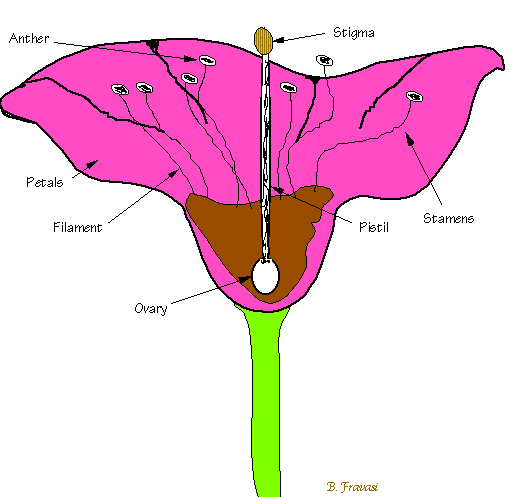
Mendel's experimental plants were a flowering species of the pea, or
Leguminosae family, called Pisum sativum,
or garden
peas.
The drawing above illustrates the basic structure of a
flower, like those found in Pisum. The flower can be
considered the specific part of, or site in, the plant where
reproduction takes place.
Pisum sativum belong to a sub-family called Papillonaceae,
a group named for the butterfly-like appearence of their flowers. And like
many flowers, the pea flower contains both male and female
parts. The female part of the flower, called the pistil usually
has a sack at its base called the ovary, which contains egg cells
called ovules. Coming out of the ovary is a column called
the style, which is crowned by a sticky structure called the
stigma; the stickiness makes the stigma suitable for receiving
and retaining pollen grains.
The pistil is nearly surrounded by the male parts of the flower, which
are called the stamens. Each stamen consists of a slender stalk,
called the filament, topped by an enlarged structure called the
anther; it is the anther that carries the pollen grains. In
Pisum sativum, the sepals on the flower are united, covering
and protecting the stamens and pistil from foreign pollen and other
seeds.
(Flower drawing by B. Fravasi,
after Corcos and Monaghan, p. 45)
MendelWeb was conceived and created by Roger B. Blumberg
rblum@netspace.org